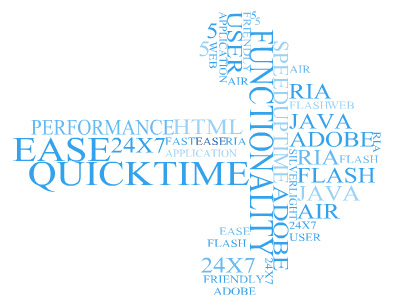 Do you have a true user’s view of your web application performance when an error occurs? Because if you don’t have web application monitoring with video capture — if all you see when an error occurs is an error code — then you’re in trouble.
Do you have a true user’s view of your web application performance when an error occurs? Because if you don’t have web application monitoring with video capture — if all you see when an error occurs is an error code — then you’re in trouble.
If every web application monitoring error diagnostic is based on reading web application code — and not seeing an actual video of the web application at the time of the error, then you are not seeing your customers’ experience of your web application – and that’s a problem. If you aren’t viewing a web application performance video you aren’t seeing your web application through your user’s eyes, no matter how hard you try or how much code you read.
Think about it: Your customer’s experience of your web application is a video view – in their mind’s eye – of their browsing into your web application. It is a web application video that they experience, judge, and remember. Their goal in this web application video view is to experience the least amount of “friction” (delays, incongruous design, cognitive dissonance) to achieve their goal, while your goal is different – to set up your web application so your goals aligns with their goals. And this small, but critical difference in alignment, is the nut that web ops, IT, and marketing teams spend countless hours and millions of dollars trying to crack. Every step you take in bridging that gap in web application alignment is a step you are taking towards constant improvement.
If, on the other hand, you are able to see a user’s view of a web application error using web application monitoring with video capture – at the time of the error (with the aid of something like UserView Monitoring, rather than merely looking at error code messages), then you are that much closer to aligning your web application goals with your customers’ web application goals. If you can visually experience errors what your customers are experiencing you can create more than a “fix” – you can create design changes much closer to the user’s view of your web application.
Whether web application monitoring with video capture pinpoints a web application time-out error, proves to marketing department that a social media widget is slowing down a web application shopping cart, or speeds up your time-to-repair (TTR) when a web application goes south at 2 a.m, a web application video capture will result in a better web operations and user experience. The more you can truly see web application issues from your user’s view – especially those moments when your relationship is most vulnerable during web application errors and downtime – the better you can “re-align” your web application goals with user web application goals. And your ability to align your web application towards your user’s perspective is critical to success with new customers and long-term customer loyalty.
Want to align your user’s view of your web application, based on their perspective? Want web application users to consider your web application responsive to their needs, based on a true user’s view? Want to more quickly diagnose and solve a web application failure…and in a way that allows you to communicate intelligently with affected users so you can say “Yes, I see exactly what you are talking about”? Web application monitoring with video capture is a strategy that achieves these objectives, so you’re no longer receiving errors at 2 am, poking through code wondering why your user’s view of your web application is different then yours.

